Conflict Zones
Attacks in Sudan’s Darfur kill at least 300 as grim anniversary passes: UN | Human Rights News

At least 300 civilians have been killed in attacks by the paramilitary Rapid Support Forces (RSF) on refugee camps in Sudan’s Darfur over the weekend, according to the United Nations.
The assault on Friday and Saturday around the Zamzam and Abu Shouk displacement camps and the city of el-Fasher has also displaced about 400,000 people, the UN International Organization for Migration (IOM) said in a report released on Monday, quoting unverified “local sources”.
The numbers came as Sudan marked the grim second anniversary of its civil war, with reports of atrocities and famine mounting, in what has been described as the world’s worst humanitarian crisis.
Among those killed in the attacks were 10 humanitarian personnel from Relief International Sudan, who had been operating one of the last functioning health centres in Zamzam, the UN said.
Satellite imagery showed burning buildings and smoke in the camp on Friday.
By Sunday, the RSF had taken control of the Zamzam camp. The UN reported that the assault had displaced between 60,000 and 80,000 households – or up to 400,000 people.
The war erupted on April 15, 2023, amid a power struggle between the military government and the RSF.
At least 20,000 people have been killed and 13 million displaced, with almost four million crossing into neighbouring countries, the UN report noted.
Both the army and the RSF have been accused of atrocities and war crimes.
Last month, the Sudanese Armed Forces (SAF) secured a significant victory against the RSF after recapturing the capital, Khartoum. That has drawn more attacks from the RSF, which controls virtually all of the Darfur region, threatening a possible partition of the country.
The RSF has asserted that the Zamzam camp was being used as a base for SAF-aligned groups.
In a video shared by the paramilitary force, RSF second-in-command Mohamed Hamdan Dagalo, also known as Hemedti, is seen speaking to a small group of displaced people, promising them food, water, medical care and a return to their homes.
Al Jazeera’s Hiba Morgan, reporting from Ombada, said even within Khartoum, the military is still carrying out operations to find remaining RSF fighters, before advancing to other areas.
“Regaining Khartoum has taken the army nearly two years of street-to-street battles,” Morgan reported.
The RSF also accelerated drone attacks on the Atbara power station on Monday, cutting off power to the wartime capital of Port Sudan.
Grim anniversary
“Two years into a devastating war, Sudan remains in a crisis of staggering proportions, with civilians paying the highest price,” said UN Secretary-General Antonio Guterres in a statement released late on Monday.
“Indiscriminate shelling and air strikes continue to kill and maim. Markets, hospitals, schools, places of worship and displacement sites are being attacked. Sexual violence is rampant, with women and girls subjected to horrific acts. Civilians suffer from gross violations and abuses from all warring parties.”
The Zamzam and Abu Shouk camps, which sheltered some 700,000 people who had fled their homes, have been stricken with famine, and aid workers cannot reach them because of the fighting.
Half of Sudan’s population of 50 million faces hunger. The World Food Programme has confirmed famine in 10 locations, and says it could spread, putting millions in danger of starvation.
“This abominable conflict has continued for two years too long,” said Kashif Shafique, country director for Relief International Sudan.
“Every moment we wait, more lives hang in the balance,” he added, calling for the world to ensure a ceasefire for what has been called a “forgotten war”.
The United Kingdom announced on Tuesday that it would contribute $158m in new aid for Sudan as it opened an international conference focused on humanitarian help for the stricken country.
The conference will also discuss finding a “pathway” to peace as fears increase that the conflict could spill over Sudan’s borders and stir further instability in the impoverished Horn of Africa region.
However, the government in Sudan has complained that it has not been invited to attend.
Conflict Zones
Haiti in ‘free fall’ as violence escalates, rights group warns | Armed Groups News
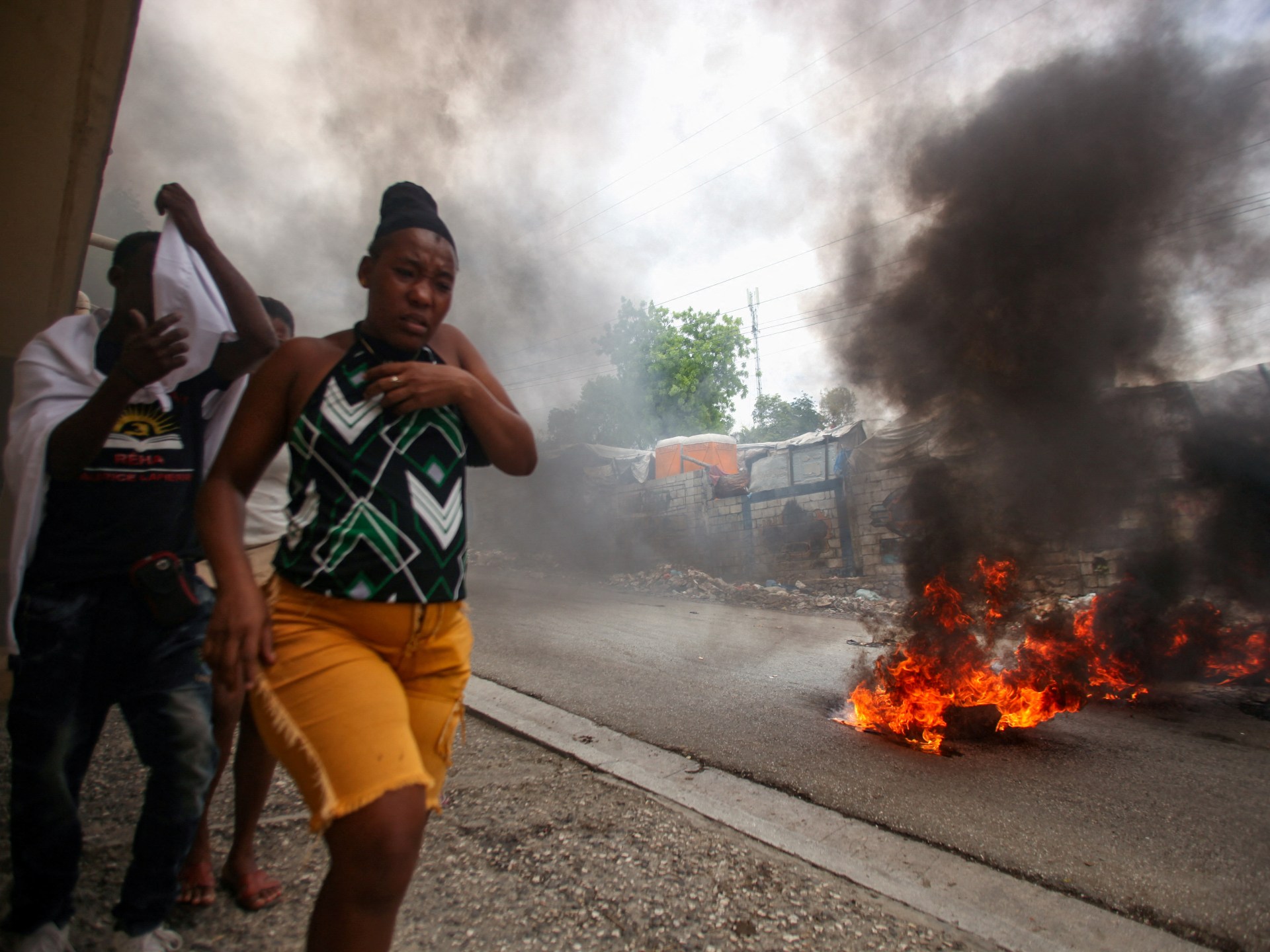
The security situation in Haiti is in “free fall”, Human Rights Watch (HRW) has warned, as armed groups continue to unleash deadly violence in the capital and other areas across the Caribbean nation.
In a statement on Thursday, HRW said criminal gangs have escalated their attacks in Port-au-Prince since late last year, and only 10 percent of the city remains under government control.
“Haiti’s security situation is in a free fall and Haitians are suffering horrific abuses,” said Nathalye Cotrino, the rights group’s senior Americas researcher.
The country has reeled from years of violence as powerful armed groups, often with ties to the country’s political and business leaders, have vied for influence and control of territory.
But the situation worsened dramatically after the July 2021 assassination of Haitian President Jovenel Moise, which created a power vacuum.

In 2024, the gangs launched attacks on prisons and other state institutions across Port-au-Prince, fuelling a renewed political crisis.
The campaign of violence led to the resignation of Haiti’s unelected prime minister, the creation of a transitional presidential council, and the deployment of a United Nations-backed, multinational police mission.
That Kenya-led police force – formally known as the Multinational Security Support Mission (MSS) – has failed to take control back from the gangs, however. Observers say the mission has been underfunded and ill-equipped.
Recently, so-called “self-defence” groups have formed in response to the armed gangs, leading to more deadly violence.
Protests have also broken out in Port-au-Prince against the country’s transitional presidential council, which has been unable to restore security. On April 7, the authorities declared a new, one-month state of emergency amid the violence.
“Declaring emergencies without equipping police with necessary resources, like effective armored vehicles, will not solve the insecurity crisis,” the National Human Rights Defense Network, a leading Haitian rights group, said in a recent report.
“The absence of state response has turned the police into firefighters—constantly reacting without strategic direction—while towns fall one after another,” the group said.

‘Why is no one helping us?’
According to UN figures, at least 1,518 people were killed and another 572 were injured between January 1 and March 27 in gang attacks, security force operations, and acts of violence committed by the “self-defence” groups and others.
Speaking to HRW, an aid worker in Haiti said people “no longer have a safe place” to go.
“Women … seeking help have not only lost loved ones, but have also been raped, displaced and left on the streets, starving and struggling to survive. We don’t know how much longer they can endure such suffering,” the aid worker said.
“All [victims] ask is for the violence to stop. With no support from the police or government, they feel abandoned. They ask, ‘Why is no one helping us? Why do Haitian lives not matter if we are human too?’”
The UN also says more than 1 million Haitians have been displaced by the violence, while half of the country – some 5.5 million people – face acute food insecurity.
In early April, Save the Children reported that more than 40,000 children were among those displaced in the first three months of 2025.
“Children in Haiti are trapped in a nightmare,” the group’s Haiti country director, Chantal Sylvie Imbeault, said in a statement.
“They are living in deadly areas controlled by armed groups, being robbed of a normal childhood, and at constant risk of recruitment—while humanitarian aid struggles to reach them,” she said.
“As displacement continues to soar, shelters are becoming completely overcrowded, leaving children vulnerable to disease, exploitation, and sexual violence.”
Conflict Zones
A nation behind bars: Why has Israel imprisoned 10,000 Palestinians? | Israel-Palestine conflict News
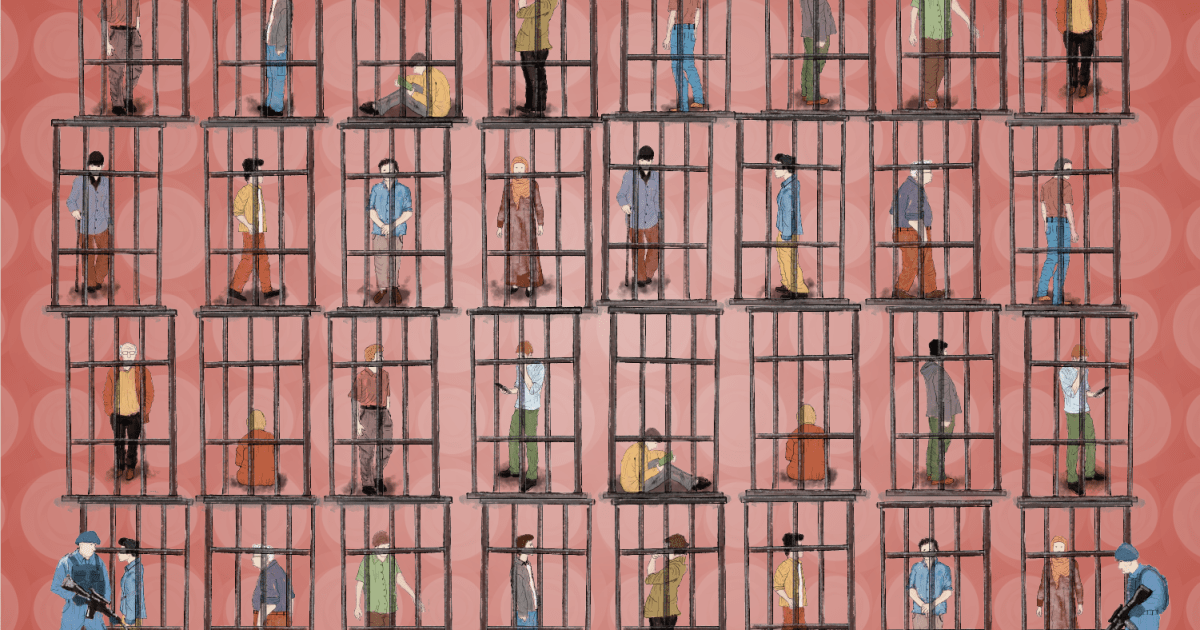
On April 17 every year, Palestinian Prisoner’s Day is commemorated to highlight the plight of those held in Israeli jails and their struggle for freedom against Israel’s continued occupation of their land.
The day marks the 1974 release of Mahmoud Bakr Hijazi, the first Palestinian freed in a prisoner swap with Israel. It was later designated to honour all Palestinian prisoners and highlight Israel’s ongoing detention of Palestinians and violation of their rights.
There are currently nearly 10,000 Palestinians held in Israeli jails in Israel and the occupied territory, according to prisoners’ rights group Addameer. To Palestinians, they are political prisoners who must be freed.

Of those in detention:
3,498 are held without charge or trial
400 are children
27 are women
299 are serving life sentences
Administrative detainees, including women and children, can be held by the military for renewable six-month periods based on “secret evidence” that neither the detainee nor their lawyer is allowed to see.
400 child prisoners – Ahmad Manasra’s case
Israel is the only country in the world that tries children in military courts, often denying them their basic rights.
According to Defense for Children Palestine, about 500 to 700 Palestinian children are detained and prosecuted in the Israeli military court system each year – some as young as 12.
The most common charge is throwing stones, a crime punishable under military law by up to 20 years in prison.
Currently, 400 Palestinian children remain in Israeli prisons, most are in pre-trial detention and have not been convicted of any offence.
One of the most harrowing child prisoner cases is that of Ahmad Manasra, who was arrested at the age of 13, brutally interrogated and then sentenced.

Ahmad was with his cousin Hassan, who allegedly stabbed two Israeli settlers near an illegal Israeli settlement in occupied East Jerusalem in 2015.
Hassan, who was 15 at the time, was shot and killed by an Israeli civilian, while Ahmad was severely beaten by an Israeli mob and run over by a car.
He suffered fractures to his skull and internal bleeding.
At the time, Israeli law stated that children under 14 could not be held criminally responsible.
To circumvent this, Israeli authorities waited until Manasra turned 14 to sentence him. The law was changed in August 2016 to allow the prosecution of younger children.
Ahmad was charged with attempted murder and sentenced to 12 years in prison. The sentence was later reduced to 9.5 years.
Ahmad has long suffered from mental health issues. At the end of 2021, a psychiatrist from Doctors Without Borders (MSF) was allowed to visit him and diagnosed him with schizophrenia. This was the first time an external doctor was allowed to see him.
On April 10, 2025, after spending more than nine years behind bars, Ahmad was finally released.
Palestinian prisoners doubled since October 7
From October 2023, when Hamas led an attack on southern Israel and Israel then began its war on Gaza, to April 2025, the number of Palestinian political prisoners doubled, rising from 5,250 to nearly 10,000.

One Palestinian freed, fifteen detained
Since October 7, Israel has detained about 30,000 Palestinians. During the prisoner-captive exchanges with Hamas, Israel has released just more than 2,000 Palestinian prisoners.
That means, for every person released, 15 others were apprehended.
During the most recent ceasefire exchange earlier this year, 739 Palestinians from Gaza were freed, that’s out of 15,000 that had been detained. While in the occupied West Bank, 652 were released, but nearly 14,500 have been detained.

Ceasefire prisoner-captive exchange
During the nearly two-month ceasefire earlier this year, Israel released 1,793 Palestinian political prisoners, while Hamas freed 38 Israeli captives, including eight bodies.
The majority of those released were from Gaza, with 739 freed – 337 from North Gaza, 227 from Gaza City, and 151 from Khan Younis, some of the war’s hardest-hit areas. In the occupied West Bank, at least 652 prisoners were released, with most coming from Ramallah (118), Hebron (111), and Nablus (79).

One million Palestinians detained since 1967
Israel’s detention policies have deeply affected Palestinian life for decades. According to the Palestinian Commission of Detainees and Ex-Detainees Affairs, since 1967, Israeli forces have detained an estimated one million Palestinians, or approximately 20 percent of the Palestinian population. Statistically, this means one out of every five Palestinians has been imprisoned at some point in their life.
For many families, arrest has become an inevitability. This systemic practice has fragmented communities, perpetuated cycles of trauma, and generated widespread resentment.
As Israel’s arrest campaign continues, many Palestinians fear that mass imprisonment is not just a byproduct of occupation but a deliberate tool of control. For the thousands currently behind bars, freedom remains uncertain, just as it has for generations before them.

Conflict Zones
Fifty years after fall of Phnom Penh, history weighs on Cambodian politics | Conflict News
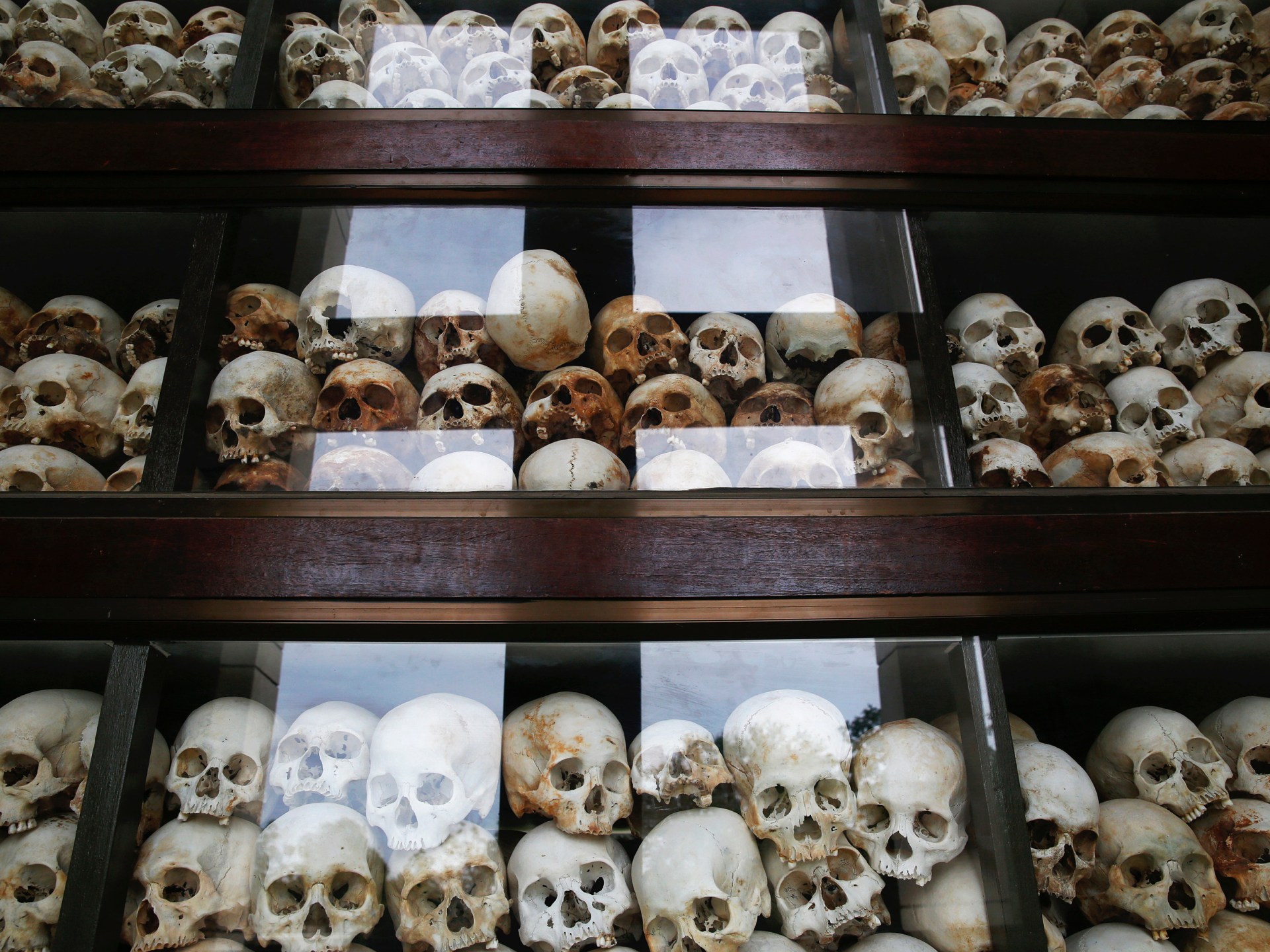
Fifty years after the fall of Phnom Penh to the Khmer Rouge rebel army, the events of April 17, 1975 continue to cast a long shadow over Cambodia and its political system.
Emerging from the bloodshed and chaos of the spreading war in neighbouring Vietnam, Pol Pot’s radical peasant movement rose up and defeated the United States-backed regime of General Lon Nol.
The war culminated five decades ago on Thursday, with Pol Pot’s forces sweeping into Cambodia’s capital and ordering the city’s more than two million people into the countryside with little more than the belongings they could carry.
With Cambodia’s urban centres abandoned, the Khmer Rouge embarked on rebuilding the country from “Year Zero”, transforming it into an agrarian, classless society.
In less than four years under Pol Pot’s rule, between 1.5 and three million people were dead. They would also almost wipe out Cambodia’s rich cultural history and religion.
Many Cambodians were brutally killed in the Khmer Rouge’s “killing fields”, but far more died of starvation, disease and exhaustion labouring on collective farms to build the Communist regime’s rural utopia.
In late December 1978, Vietnam invaded alongside Cambodian defectors, toppling the Khmer Rouge from power on January 7, 1979. It is from this point onwards that popular knowledge of Cambodia’s contemporary tragic history typically ends, picking up in the mid-2000s with the start of the United Nations-backed war crimes tribunal in Phnom Penh, where former regime leaders were put on trial.
For many Cambodians, however, rather than being relegated to history books, the 1975 fall of Phnom Penh and the toppling of the Khmer Rouge in 1979 remain alive and well, embedded in the Cambodian political system.
That tumultuous Khmer Rouge period is still used to justify the long-running rule of the Cambodian People’s Party (CPP) under varying forms since 1979, and the personal rule of CPP leader Hun Sen and his family since 1985, according to analysts. It was the now ageing senior leadership of the CPP who joined with Vietnamese forces to oust Pol Pot in 1979.
While memories of those times are fading, the CPP’s grip on power is as firm as ever in the decades since the late 1970s.
‘The making of a political system’
The ruling CPP see “themselves as the saviour and the guardian of the country”, said Aun Chhengpor, a policy researcher at the Future Forum think tank in Phnom Penh.
“It explains the making of a political system as it is today,” he said, noting that the CPP has long done what it required to “ensure that they are still there at the helm … at any cost”.
Most Cambodians have now accepted a system where peace and stability matter above all else.
“There seems to be an unwritten social contract between the ruling establishment and the population that, as long as the CPP provides relative peace and a stable economy, the population will leave governance and politics to the CPP,” Aun Chhengpor said.
“The bigger picture is how the CPP perceives itself and its historic role in modern Cambodia. It’s not that different from how the palace-military establishment in Thailand or the Communist Party in Vietnam see their roles in their respective countries,” he said.

The CPP headed a Vietnamese-backed regime for a decade, from 1979 to 1989, bringing relative order back to Cambodia after the Khmer Rouge, even as fighting persisted in many parts of the country as Pol Pot’s fighters tried to reassert control.
With support dwindling from the Soviet Union in the last days of the Cold War and an economically and militarily exhausted Vietnam withdrawing from Cambodia, Hun Sen, by then the leader of the country, agreed to hold elections as part of a settlement to end his country’s civil war. From 1991 to 1993, Cambodia was administered by the UN Transitional Authority in Cambodia (UNTAC).
The Cambodian monarchy was formally re-established, and elections were held for the first time in decades in 1993. The last Khmer Rouge soldiers surrendered in 1999, symbolically closing a chapter on one of the 20th century’s bloodiest conflicts.
Despite a bumpy road forward, there were initial hopes for Cambodian democracy.
The royalist National United Front for an Independent, Neutral, Peaceful and Cooperative Cambodia Party – better known by its acronym FUNCINPEC – won the UN-administered elections in 1993. Faced with defeat, the CPP refused to cede power.
The late King Norodom Sihanouk stepped in to broker an agreement between both sides that preserved the hard-won peace and made the election a relative success. The international community breathed a sigh of relief as the UNTAC mission in Cambodia had been the largest and costliest at that time for the world body, and UN member states were desperate to declare their investment in nation rebuilding a success.
Ruling jointly under a power-sharing agreement with CPP and FUNCINPEC co-prime ministers, the unsteady alliance of former enemies held for four years until ending in a swift and bloody coup by Hun Sen in 1997.
Mu Sochua, an exiled opposition leader who now heads the nonprofit Khmer Movement for Democracy, told Al Jazeera that the CPP’s resistance to a democratic transfer of power in 1993 continues to reverberate throughout Cambodia today.
“The failure of the transfer of power in 1993 and the deal the King made at the time … was a bad deal. And the UN went along because the UN wanted to close shop,” she told Al Jazeera from the US, where she lives in exile after being forced to flee the CPP’s intensifying authoritarianism at home.
“The transitional period, the transfer of power … which was the will of the people, never happened,” Mu Sochua said.
End of warfare does not mean the beginning of peace
Following the coup in 1997, the CPP did not come close to losing power again until 2013, when they were challenged by the widely popular Cambodian National Rescue Party (CNRP).
By the time of the next general election in 2018, the CNRP was banned from politics by the country’s less-than-independent courts, and many of the opposition leaders were forced to flee the country or ended up in prison on politically motivated charges.
Unhindered by a viable political challenger, Hun Sen’s CPP went on to win all seats in the 2018 national election, and all but five of the 125 parliamentary seats contested during the last general election in 2023.

The CPP has also firmly aligned with China, and the country’s once vibrant free press has been shut down, and civil society organisations cowed into silence.
After notching up 38 years in power, Hun Sen stepped aside as prime minister in 2023 to make way for his son Hun Manet – a sign that the CPP-led political machine has eyes on dynastic, multi-generational rule.
But new challenges have emerged in Cambodia’s post-war decades of relative prosperity, huge inequality and de facto one-party rule.
Cambodia’s booming microcredit industry was intended to help lift Cambodians out of poverty, but the industry has instead burdened families with high levels of personal debt. One estimate put the figure at more than $16bn in a country with a population of just 17.4 million and a gross domestic product (GDP) of $42bn in 2023, according to World Bank estimates.
Aun Chhengpor told Al Jazeera there are signs the government is taking note of these emerging issues and demographic changes.
Hun Manet’s cabinet is shifting towards “performance-based legitimacy” because they lack the “political capital” once bestowed by the public on those who liberated the country from the Khmer Rouge.
“The proportion of the population that remembers the Khmer Rouge, or that has usable memories of that period, is shrinking year by year,” said Sebastian Strangio, author of Hun Sen’s Cambodia.
“I don’t think [the CPP ‘s legacy] is sufficient for the majority of the population born since the end of the Cold War,” Strangio told Al Jazeera.
Now, there even appears to be room for a limited amount of popular opposition, analyst Aun Chhengpor said.
In January, Cambodian farmers blockaded a main highway to protest against the low prices of their goods, suggesting there may be “some space” in the political system for localized dissent on community-based issues, he said.
“[It] will be an uphill struggle for the fractured political opposition to thrive – not to mention to organise among themselves and, let alone, have the hope of winning a general election,” Aun Chhengpor said.
“However, there are indications that the CPP still somehow believes in the multiparty system and limited democracy in the way that they can have a say on when and how much democracy,” he added.
Speaking in exile from the US, Mu Sochua had a dimmer view of Cambodia’s situation.
The same month as the farmer protests in Cambodia, a former Cambodian opposition member of parliament was shot dead in broad daylight on a street in Thailand’s capital, Bangkok.
The brazen assassination of Lim Kimya, 74, a dual Cambodian-French citizen, recalled memories of the chaotic political violence of the 1990s and early 2000s in Cambodia.
Peace and stability, Mu Sochua said, exist only on the surface in Cambodia, where still waters run deep.
“If politics and the space for people to engage in politics is non-existent, what dominates then is not peace,” she said.
“It’s still the feeling of war, of insecurity, of the lack of freedom,” she told Al Jazeera.
“After the war, 50 years later, at least there is no bloodshed, but that alone does not mean there is peace.”
-
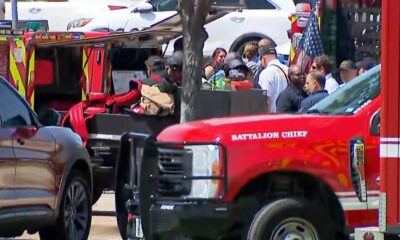
 Education2 days ago
Education2 days agoSuspect in custody after 4 hurt in Texas high school shooting
-

 Europe2 days ago
Europe2 days agoPolice arrest couple for breeding and selling exotic cats in Spain
-

 Education2 days ago
Education2 days agoTrump administration revokes humanitarian parole of Spanish teacher
-
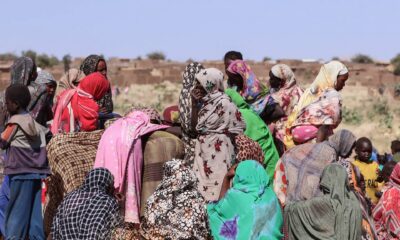
 Conflict Zones2 days ago
Conflict Zones2 days agoAfter two years of war in Sudan, the world can no longer plead ignorance | Conflict
-

 Sports2 days ago
Sports2 days agoNew Orleans Saints win lawsuit over fleur-de-lis trademark filed by ‘direct descendant of the Kings of France’
-

 Conflict Zones14 hours ago
Conflict Zones14 hours agoHaiti in ‘free fall’ as violence escalates, rights group warns | Armed Groups News
-
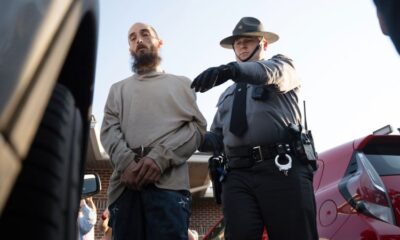
 Europe2 days ago
Europe2 days agoCody Balmer, the suspect in arson at Pennsylvania governor’s home targeted the governor for his views on war in Gaza, warrant says
-

 Sports2 days ago
Sports2 days agoStephen Curry and Jimmy Butler lift the Warriors past the Grizzlies and into the NBA Playoffs




